The following was written in February 2009 for a projected volume on Stanley Kubrick that was being prepared at the time by the Chicago-based magazine Stop Smiling, which commissioned this and a few shorter pieces by me for it, including a short “sidebar” text about James Naremore’s On Kubrick, written in April 2010, which I’ve appended to our exchange. [2023: An expanded second edition of this valuable book has recently appeared.] For a variety of reasons, including the discontinuation of the magazine, the book never appeared, and the editor, James Hughes, gave me permission to post it here, originally in September 2013….I obviously guessed wrong when I surmised here that Kubrick’s family would probably keep Fear and Desire “off the market”. — J.R.
Early Kubrick: An Exchange
By Jonathan Rosenbaum and James Naremore
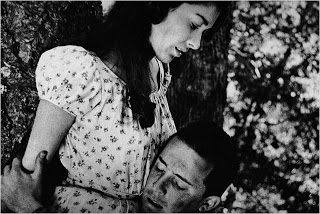
Dear Jim,
As you note in your book on Kubrick, he removed his first feature, Fear and Desire (1953), from circulation at some point during the 60s. I know this couldn’t have been during the early 60s because I saw it for the first time in 1961 or ‘62, at the Charles Theater, a legendary, eclectic arthouse on the Lower East Side, when I was a freshman at NYU.
Even though our aesthetic and political tastes are pretty similar, one thing that divides us about Kubrick is that you tend to prefer his second feature, Killer’s Kiss (1955), to his first, while I opt for its predecessor. Though it’s understandable why Kubrick wanted to suppress it — and why his family is likely to keep it off the market — I think it’s worth discussing the film for all that it reveals about him. It’s the first of his war movies, and the only one that refuses to situate itself in any particular war. It focuses on four men whose plane has crashed behind enemy lines, and the deliberate vagueness of the opening narration is crucial: “There is war in this forest — not a war that has been fought, or one that will be, but any war. And the enemies that struggle here do not exist unless we call them into being. This forest, then, and all that happens now, is outside history. Only the unchanging shapes of fear and doubt and death are from our world. These soldiers that you see keep our language and our time, but have no other country but the mind.”
One might even argue that by focusing on “the country of the mind,” Fear and Desire is more seminal to Kubrick’s subsequent work than Killer’s Kiss. The two films make a very interesting pair, in any case, especially in relation to such topics as amateurism versus professionalism, an art-movie aesthetic (paradoxically being floated before art movies as we know them even existed in the U.S., apart from Italian neorealism and a few related offshoots) versus a commercial strategy predicated on genre and exploitation, softness and vulnerability versus hardness and brutality, metaphysical abstraction (the film was shot in California’s San Gabriel Mountains, which Kubrick barely knew) versus a very precise sense of New York in the mid-50s (in fact, if one excludes Eyes Wide Shut, this mangy thriller is Kubrick’s only film about his home town), and, more debatably, Carl Jung and some notion of a Collective Unconscious versus Sigmund Freud and the Oedipus Complex — another kind of opposition that one can see being played in various ways throughout Kubrick’s career. It’s worth adding that Kubrick, who handled most of the cinematography on both films himself, was also working with the same friend from high school on the scripts of both — Howard O. Sackler (1929-1982), who later won a Pulitzer prize for a his play The Great White Hope and was credited for work on the scripts of Gray Lady Down, Jaws 2, and Saint Jack in the late 70s.
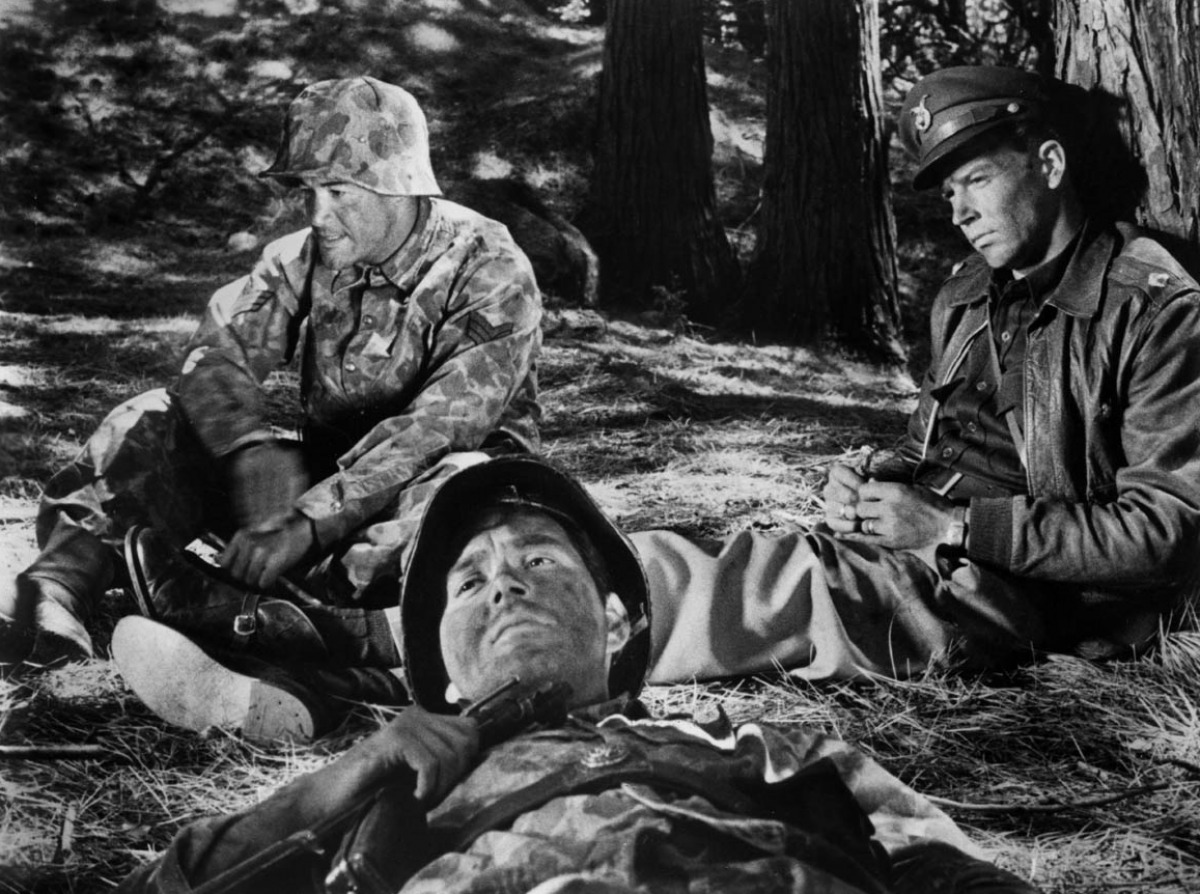
Both features reek of 50s avant-garde, but in very different ways: Fear and Desire is beatnik-existential in the purple prose-poetry of its offscreen narration (both “objective” and stream-of-consciousness), in the quasi-abstract act seen behind the credits, in the awkward slippage between allegory and what registers simply as a nonspecific war film, and in the literary treatments of both madness and döppelgangers (both of which recur throughout Kubrick’s work). Whereas Killer’s Kiss is more related to the sleaze and grotesquerie of urban art photography by Weegee and Diane Arbus, among others — a relation that your book is especially good at describing — and by certain forms of minimalism, such as the prolonged use of a ballet solo by Kubrick’s second wife to illustrate a convoluted flashback.
I appreciate how important it was for Kubrick at this early stage in his career to establish his professional bona fides, which must have made Fear and Desire a continuing embarrassment. But the raw, exacerbated emotions on display in that film seem equally relevant; it’s not for nothing that the title could accurately describe most of Kubrick’s subsequent films, or that the killing of a young woman here is like a first draft of the traumatic climax in Full Metal Jacket. By way of contrast, the sheer nastiness of Killer’s Kiss anticipates A Clockwork Orange, which for both of us remains Kubrick’s least attractive film.
I realize that part of what bothers you — and must have bothered Kubrick — about Fear and Desire is the very unprofessional acting. But after ruling out Frank Silvera (the only solid pro in both features) and maybe Virginia Leith (in a wordless performance as the young local woman held prisoner by future writer-director Paul Mazursky, playing the youngest of the soldiers), I don’t think one can say much for the actors in either movie. In any case, I’d welcome more of your thoughts about both films.
Best,
Jonathan
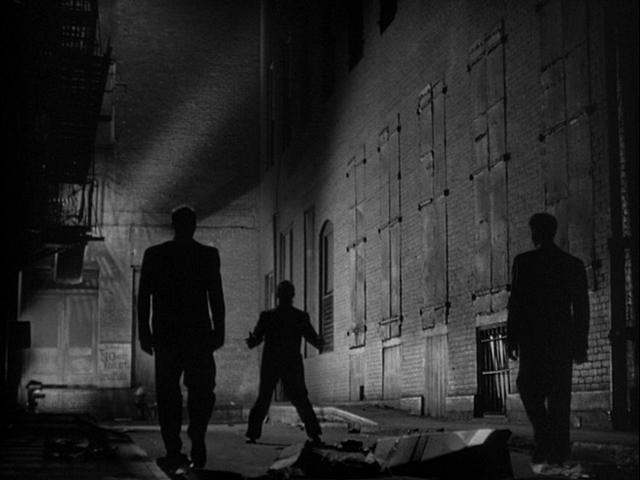
Dear Jonathan,
You’re right, I prefer Killer’s Kiss — in fact it’s one of my favorite Kubrick pictures, probably because I have a general fondness for film noir and it was my first Kubrick film. I saw it as a teenager, during what André Breton calls “the cinema age,” or the period when one is most susceptible to movies. It played in a fleapit in Lake Charles, Louisiana, and if memory serves I was the only person in attendance. It was a cheapo crime picture filled with genre clichés and dubbed dialogue, but it had an artisanal, off-Hollywood quality that made me think I, too, could make a movie. I really sat back and took notice, however, when I saw the climactic fight in the mannequin factory, which was so skillfully shot and edited that it was frightening and darkly funny at the same time. I think it deserves comparison with the mirror maze in Welles’s Lady from Shanghai and with some of Hitchcock’s montages. When I left the theater, I checked the lurid exploitation poster outside and read in small print that somebody named Stanley Kubrick was the director.
Killer’s Kiss looks even better to me today because I know the context out of which it emerged and can see things I didn’t notice initially. I don’t find it quite as nasty a film as you do, but it certainly makes Kubrick’s life-long fascination with the grotesque more evident than in Fear and Desire. It has stunning imagery of New York, all of which is related to Kubrick’s early work for Look magazine and his membership in what art historians call the “New York School” of street photographers. (It also borrows images from Kubrick’s first film, the short documentary Day of the Fight.) In my view its relatively small cast of actors is better on the whole than the cast in Fear and Desire, and its documentary shots of 1950s Manhattan are more raw and compelling than the plein air effects of the earlier picture. We agree, however, that both films are seminal. You make an excellent point when you say that Fear and Desire (incidentally, that’s not Kubrick’s title but his distributor’s) gives us the Jungian Kubrick and Killer’s Kiss the Freudian — which is maybe another reason why I favor the latter. In this regard it seems to me appropriate that Kubrick’s career is neatly book-ended. His last two films, Full Metal Jacket and Eyes Wide Shut, seem to look back to the first two: an experimental war movie that alludes to Jung and a noir-like, Freudian drama set in Manhattan.
For all its occasional awkwardness, Fear and Desire can claim the distinction of being the first independently produced art movie by a US director in the decade after WWII, and it sets a pattern for much of Kubrick’s later work. As many critics have noticed, he often makes films about rational plans that go awry. Along similar lines, he seems attracted to the masculine glamour of combat and the rational geometry of military strategy, but he depicts war as an absurdity. The enemy in his war films is usually either unseen or a mirror image of the protagonists; and on the rare occasions when his soldiers directly encounter someone from behind enemy lines, that person is usually a woman who provokes sexual desire and murderous anxiety, as in Fear and Desire and Full Metal Jacket, or psychic dissolution and longing for the maternal, as in Paths of Glory. (The exception to these rules is Spartacus, over which Kubrick had little control.) I suppose you could say that for Kubrick, as for late Freud, war is love. In most of his pictures, masculine desire is potentially fascistic, enamored of death, and self destructive. This dynamic is obvious in a masterpiece like Dr. Strangelove, but it can also be seen at a less obvious level in a thriller like Killer’s Kiss, where the characters played by Frank Silvera and Jamie Smith are in a sense doubles, equally neurotic in their relation to the woman played by Irene Kane. When Smith embraces Kane in the ostensibly happy ending, he holds her is almost the same rough way as Silveria has done in an earlier scene.
I think Killer’s Kiss also sets a pattern or reveals a general tendency. Like the surrealists and like certain authors of fairy tales, Kubrick was very much interested in the relation between humans and dolls or automata; in this film, for example, the plastic baby in a vendor’s stand on Times Square, the strange doll in the taxi-dancer’s room, and the loft filled with mannequins seem to echo the somewhat robotic characters. As a result, Killer’s Kiss is suffused with a feeling of the uncanny. Kubrick would go on to make brilliant use of uncanny effects, especially in 2001, The Shining, and Eyes Wide Shut (the last of which gives us some strange mannequins in a costumer’s shop and an orgy where the participants seem like robots in party masks). It’s no wonder that one of his cherished projects was A.I. Artificial Intelligence, a story about an uncanny, childlike robot, which allowed him to speculate deeply about the nature of the human.
Regards, Jim
Dear Jim,
It’s ironic how Orson Welles is commonly regarded as a failure in the U.S. while Kubrick is normally seen as a success, even though they released the same number of features and Kubrick made even more of his own — all but the first four, the ones we’re considering here — in exile.
I think two of your points — Kubrick often making films “about rational plans that go awry” and his deep speculations about the nature of the human (which include, of course, the nature of his audience) — are interconnected in interesting ways. Together they provide a useful way of viewing The Killing and Paths of Glory, in which he finally established himself as a Hollywood professional.
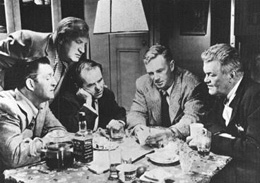
For me, The Killing remains Kubrick’s most fully successful genre movie, making it a picture I can revisit more often than any of the others, and in this respect one might describe it as a rational career move on his part that never goes awry, even if the elaborate heist that it’s about eventually comes apart at the seams. Whereas Paths of Glory starts out as another kind of Hollywood genre piece, a period war movie (set among French soldiers during World War 1), and gradually mutates into something else — a point you hint at in your book when you describe it being both a star vehicle that’s a melodrama with a social conscience (which points to Kirk Douglas’s control and involvement) and a director’s picture whose auteurist thrust is more philosophical than social. The social melodrama posits a world in which justice is achievable (even if it’s seriously thwarted); the philosophical parable perceives only absurdity and cosmic injustice.

A curious paradox at the heart of The Killing is that it gradually reveals a brilliantly worked-out plan to rob a racetrack. Yet there’s no master-mind behind this scheme that can be found anywhere in the plot. This is the kind of paradox that’s part of Kubrick’s commercial pact with his audience, because if Johnny Clay (Sterling Hayden), the convict who plans and stage-manages the heist, was shown as any kind of genius we wouldn’t connect with him as well as we do. Even his last name marks him as Everyman, a simple soul. The film’s only intellectual character, Maurice (Kola Kwariana) — a wrestler and chess master who pointedly isn’t allowed to know about Johnny’s brilliant scheme beyond the modest role he’s hired to play in it — even makes a special point about Johnny not being bright, just after delivering a lengthy speech about the masses’ deep mistrust of individuality, intelligence, and artistry. One might even call this strange soliloquy Kubrick’s buried confession of his own strategy, indirectly explaining how he can win over the same audience that he fears and potentially despises.
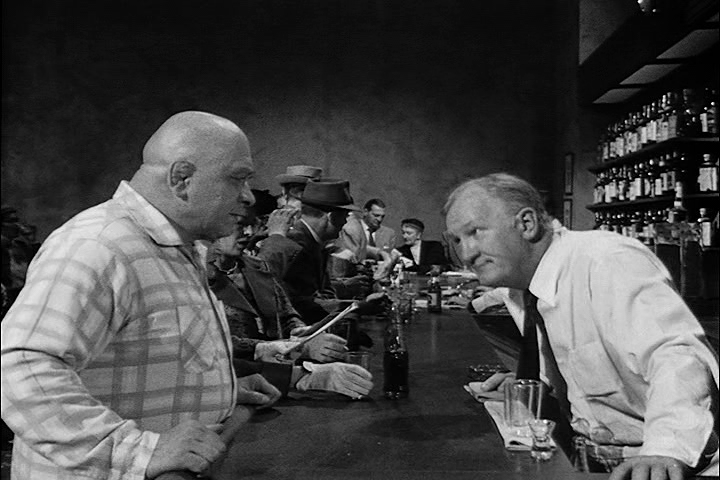
Kubrick’s deep ambivalence about this audience is expressed most fully and dialectically in the remarkable final sequence of Paths of Glory, perhaps the climax of his early period, when a frightened, captured young German woman (played by Kubrick’s future wife, Susanne Christian) is persuaded to sing for a crowd of French soldiers. At the beginning of this sequence — when we’re still recoiling from the brutal and virtually arbitrary execution of three French soldiers by a firing squad in order to cover the hypocrisy and impotence of a careerist general (played by George Macready) — this crowd is seen as rowdy, vulgar, and swinish (“Hey, talk in a civilized language,” someone jeers), and Colonel Dax (Douglas), the knowledgeable and even somewhat intellectual hero who has tried (and failed) to defend and save the executed men, looks on these soldiers with disgust. But then, after the woman starts to sing in German, the same French soldiers are viewed empathetically as they start to hum along with her; some of them are even seen weeping, and after Dax is informed that they have to return to the front, he utters the film’s last line, “Give the men a few minutes more.” One might say that with this ending, Kubrick has finally found a way to remain intellectual without losing his audience.
Best,
Jonathan
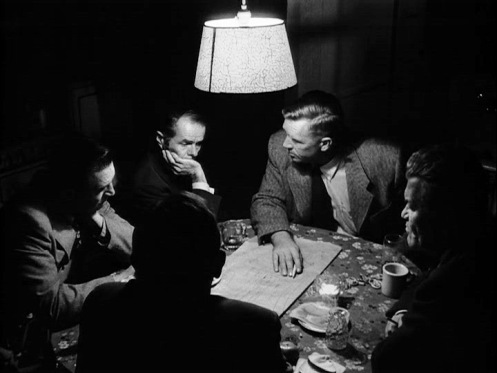
Dear Jonathan:
I agree The Killing is Kubrick’s most conventional genre picture, but it’s significant that the genre, film noir, has an affinity with art movies. Noir lends itself to “artistic” camera effects and usually borrows narratives from literary modernism and art maudi. In contrast with other Hollywood genres, it’s often told from the point of view of criminals or morally ambiguous characters; hence it’s anti-melodramatic and subversive of Breen-office rules. Many of Kubrick’s more unconventional later films have something vaguely noir-like about them, and The Killing prefigures his interest in the theme of the criminal as artist, as in Lolita and Clockwork Orange. (Johnny Clay isn’t an artist, but Maurice’s vaguely Nietzscheian speech makes him seem a director.)
The Killing is interesting when viewed alongside Andre de Toth’s good if conventional Crime Wave (1954), which was also shot on location in Los Angeles, with a cast that includes Sterling Hayden, Ted de Corsia, and Timothy Carey. Kubrick’s film is more hip, blackly humorous, and consciously artful — it’s the Citizen Kane of the genre, with a prismatic narrative, dazzling camera movements, deep-focus long takes, and a portentous narrator reminiscent of “News on the March.” As usual with Kubrick, it generates tension between “rational” and “irrational” elements (the jig-saw puzzle plot and coolly controlled shooting style versus the pulp eroticism and black comedy). A logical, almost military plan for a robbery is presented as a dreamlike montage of lurid, grotesque fragments; and for me, the cruel but compelling scenes involving Elisha Cook and Marie Windsor, which feel like a pulpy burlesque of Harold Pinter, are more fascinating than the robbery itself.
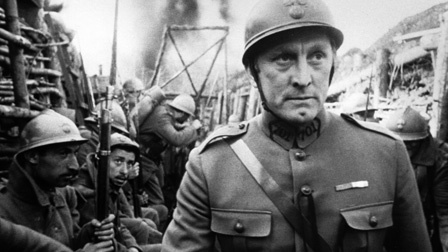
Kubrick began his Hollywood career by following in the footsteps of John Huston. The Killing is indebted to The Asphalt Jungle (1950), and to The Treasure of the Sierra Madre (1945), which Kubrick once listed among his ten favorite films. Paths of Glory is an anti-war period picture that has something in common with Huston’s Red Badge of Courage (1951). But the differences between the two directors help point up what you say about Kubrick’s attitude toward his audience. Kubrick is less inclined to sentiment and seldom allows us to develop unproblematic identification with the leading characters. In The Asphalt Jungle, Sterling Hayden is a proletarian who becomes a criminal out of necessity, and his death generates pathos; in The Killing, he’s a career criminal who has only a few “humanizing” moments, and his downfall is darkly ironic. If Paths of Glory had been made according to Kubrick and Jim Thompson’s original script, the character played by Kirk Douglas would have been less wholly admirable; but Douglas, the star who backed the project, made sure he would play a battlefield hero and an impassioned courtroom advocate. Paths of Glory is the only Kubrick film (other than Spartacus, which Douglas also controlled) that gives us a purely admirable protagonist of the sort found in melodrama — although its bleak, unflinching tone makes it atypical of Hollywood. It’s a superbly directed movie containing iconic scenes of trench warfare, and the ending is remarkable, even though it wasn’t Kubrick’s idea. He planned to end with the execution, as Humphrey Cobb’s 1935 novel had done; ultimately, he agreed with screenwriter Calder Willingham, who wrote the scene with the captured German girl in order to give the audience relief. Even so, that scene wouldn’t be so good if not for Kubrick’s news-photographer’s sense of authentic looking facial types. I love the way composer Gerald Fried, who worked with Kubrick on all these early films, closes Paths of Glory with the sweet melody the girl has been singing, orchestrated as a military march. The ironic combination of triumphal masculine pomp and maternal sadness is perfectly appropriate.
Regards, Jim
***
Naremore on Kubrick
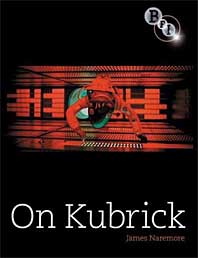
Orson Welles and Stanley Kubrick are probably the two most outstanding American narrative directors who could be described as intellectuals, and James Naremore is the only one to have written books about both of them. These aren’t his only major achievements as a critic; he’s also arguably produced the best books about film acting (Acting in the Cinema, 1988) and film noir (More Than Night: Film Noir in its Contexts, 2nd. ed, 2008), and both of these, like The Magic World of Orson Welles (2nd ed., 1989) and On Kubrick (London: British Film Instiotute, 2007), have the same uncommon virtue as academic texts: they simplify and elucidate complex subjects, the precise opposite of most writing by film professors.
It’s worth adding that Naremore’s acuity about both film acting and film noir carries over into his prose about Kubrick. Some of the topics with particular relevance to these themes are the aesthetics of grotesquerie; the modernist school of New York still photography in which Kubrick developed his visual style; and the offbeat casting and/or improvisations) of such actors as Timothy Carey (The Killing, Paths of Glory), Peter Sellers (Lolita, Dr. Strangelove), Lee Ermey (Full Metal Jacket), and Sydney Pollack (Eyes Wide Shut).
— Jonathan Rosenbaum
